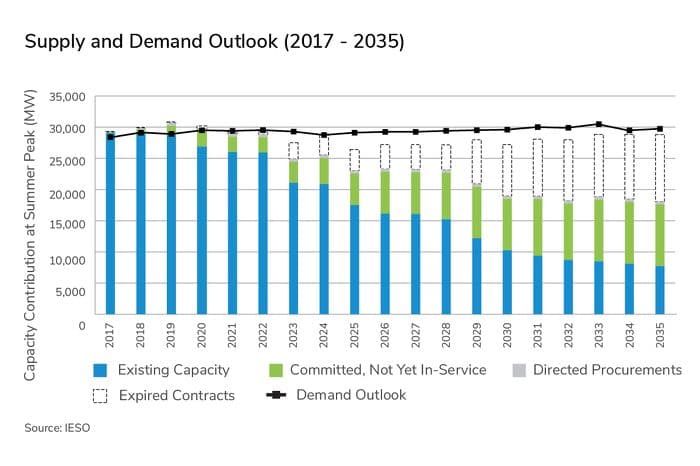On Thursday, Glenn Thibeault, Ontario’s minister of energy, released the updated Long-Term Energy Plan (LTEP), Delivering Fairness and Choice. As part of this plan, the LTEP remains committed to achieving Ontario’s climate goals and forecasts a heightened need for electricity supply in the coming years to support the transition to a low-carbon economy, according to an analysis from the Canadian Wind Energy Association (CanWEA).
Ontario will need more renewable energy if it is to meet greenhouse-gas (GHG) emission targets moving forward, says CanWEA, adding that new wind energy provides the best value for consumers to meet the growing demand for affordable non-emitting electricity.
The Ministry of Energy developed the LTEP by reflecting on feedback received during a public and stakeholder engagement process, as well as the IESO’s Ontario Planning Outlook. The plan lays out expectations for energy supply and demand and reflects upon changing consumer demands. It notes that investment in the electricity market has improved reliability and reduced emissions.
It also comments on how securing wind power has changed over time: “The introduction of the Large Renewable Procurement (LRP) process in 2014 resulted in strong competition between developers of large renewable projects. This significantly reduced the costs of wind and solar energy, saving money for electricity ratepayers.” CanWEA says this improved process resulted in an average 20-year procurement price of C$.0845/kWh, which was less than the average cost of generation, and it enabled increased participation and support from host communities and indigenous groups.
According to CanWEA, Ontario will need more electricity supply before 2024 (see graphic below). Over the next decade, as much as 20 GW of electricity supply will be removed from the system; this represents close to half of all supply in the province. This includes approximately 3 GW of supply coming offline at the Pickering Nuclear Generating Station, as well as 9 GW of expiring generation contracts. Wind energy will be needed to help fill this supply gap, says CanWEA.

CanWEA and the wind energy industry will continue to work with the Independent Electricity System Operator (IESO) on the implementation of the LTEP. CanWEA also pledges to collaborate with the IESO through the Market Renewal Program to enable affordable, non-GHG-emitting generation.
“Ontario’s harnessing of wind power can help fight climate change while keeping electricity costs low. Without new wind energy, costs to electricity customers and carbon emissions will both continue to rise,” comments Robert Hornung, president of CanWEA.
“CanWEA supports competitive, market-based approaches to providing flexible, clean and low-cost energy supply to meet Ontarians’ changing needs,” adds Brandy Giannetta, CanWEA’s Ontario regional director.





This is based on the same flawed information that these greedy companies have been using for years they claim that wind energy is green. It is not .They claim they are safe yet thousands of residents living within 5km have had life altering side effects that are ignored and dismissed. They kill thousands of birds and bats many of witch are indangered (bald eagles, golden eagles,little brown bats ) They have contaminated hundreds of water wells. Yet they keep telling us how wonderful these bird blending people harming environment disrupting eye sores are . When will the government lies and… Read more »